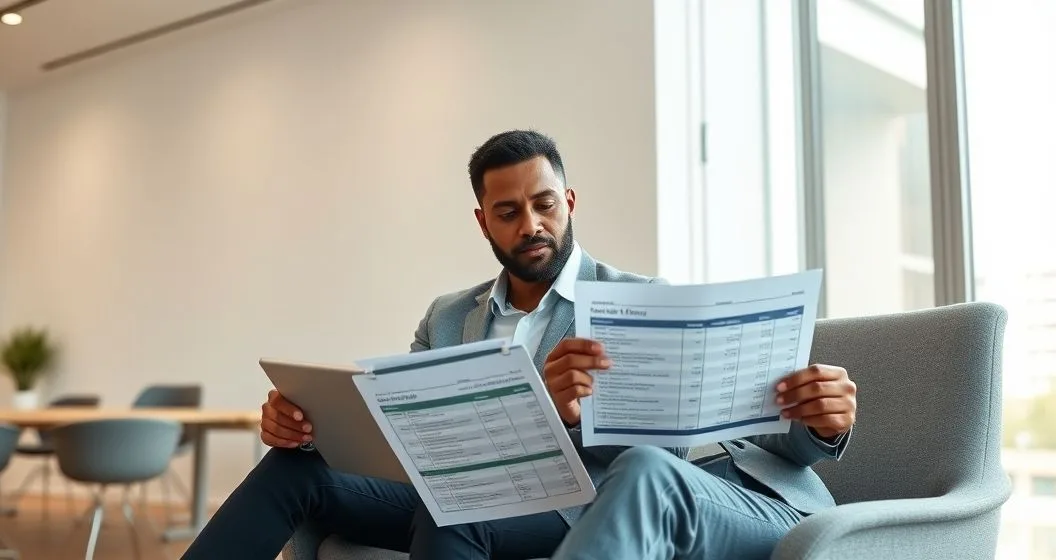Quick overview
A Partial-Payment Installment Agreement (PPIA) is an option when you owe the IRS but can’t reasonably pay the full amount. Unlike a full installment agreement, a PPIA accepts monthly payments that don’t completely retire the liability; the unpaid balance may remain when the agreement ends. The IRS evaluates PPIAs using documented financials and typically ties payments to your Collection Statute Expiration Date (CSED). (IRS: “Installment Agreements”, https://www.irs.gov/payments/installment-agreements)
How a PPIA works
- You submit a Collection Information Statement (Form 433-F or Form 433-A, depending on circumstances) and supporting documents so the IRS can calculate reasonable monthly payments.
- The IRS sets a monthly amount based on your allowable living expenses and disposable income. Payments often continue until the CSED (generally 10 years from assessment) unless the IRS revises the plan.
- Interest and penalties generally continue to accrue on the unpaid balance; the IRS may file or keep a lien.
(See IRS guidance on collection options: https://www.irs.gov/businesses/small-businesses-self-employed/collection-information)
Who is eligible and when it’s appropriate
A PPIA is appropriate if:
- You cannot pay the full tax now or on an affordable monthly schedule, and
- Your verified income, assets and allowable expenses show you cannot fully satisfy the debt before the CSED, and
- You remain current on all future tax filings and payments.
PPIAs are fact-specific. The IRS evaluates the entirety of your finances rather than applying a single numerical cut-off. If you have non‑exempt equity in assets or discretionary income, the IRS may require larger payments or pursue collection.
When to consider a PPIA instead of other options
Consider a PPIA when:
- You can make regular monthly payments but lack funds to pay in full or qualify for a shorter plan.
- You don’t qualify for an Offer in Compromise (OIC) or OIC processing would take longer than acceptable (see IRS Offer in Compromise: https://www.irs.gov/payments/offer-in-compromise).
- You want to stop immediate enforced collection (levy/garnishment) while making reasonable payments.
If your financial picture improves, you can request a modification, or the IRS may recalculate payments. In some cases an OIC or bankruptcy may be a better path—consult a tax professional.
Step-by-step: How to apply
- Gather documentation: recent pay stubs, bank statements, proof of necessary living expenses, and completed Form 433-F or Form 433-A as required.
- Determine whether you should apply online, by phone, or through the collection office handling your case. Smaller, streamlined agreements may be set up online; PPIAs usually require more documentation. (FinHelp: “Setting Up an IRS Installment Agreement Online: A Practical Walkthrough”, https://finhelp.io/glossary/setting-up-an-irs-installment-agreement-online-a-practical-walkthrough/)
- Submit your financial statement and proposed monthly payment to the IRS; respond promptly if the IRS requests more information.
- If accepted, keep records, make payments on time, and file future tax returns on time. If circumstances change, request a recalculation or modification. (FinHelp: “How to Prepare a Financial Statement for Installment Agreement Applications”, https://finhelp.io/glossary/how-to-prepare-a-financial-statement-for-installment-agreement-applications/)
Costs, consequences and what to expect
- Interest and penalties continue on unpaid balances; interest rates are set by the IRS and change periodically.
- A tax lien may be filed or kept in place while the agreement is active.
- Missing payments can lead to default and immediate collection actions.
Common mistakes to avoid
- Assuming a PPIA erases the debt: it usually does not.
- Under‑documenting expenses or overstating hardship—this can delay or deny approval.
- Falling behind on post‑agreement tax filings, which can void the arrangement.
Short examples (real-world context)
- Temporary hardship: An unemployed taxpayer with little nonexempt equity could negotiate a lower monthly payment to avoid immediate levy while they find work. In my practice I’ve found this stabilizes cash flow and prevents escalated collection while the taxpayer recovers.
- Business cash‑flow issue: A small business owner with seasonal income may set a PPIA to preserve working capital while making agreed payments.
Professional tips
- Be thorough: a complete Form 433 and supporting documents speeds review.
- Consider automatic payments to reduce missed-payment risk. (FinHelp: “How Automatic Payments Work for IRS Installment Agreements”, https://finhelp.io/glossary/how-automatic-payments-work-for-irs-installment-agreements/)
- Keep copies of every communication; note the IRS representative’s name and case ID.
When to get professional help
If your situation is complex—significant assets, business ownership, or contested liability—consult a tax attorney, enrolled agent, or CPA. In my 15+ years advising clients, coordinated representation speeds negotiations and reduces mistakes.
Disclaimer
This article is educational and not individualized tax advice. Rules change and cases vary; consult a qualified tax professional or the IRS for guidance tailored to your situation.
Authoritative sources
- IRS — Installment Agreements: https://www.irs.gov/payments/installment-agreements
- IRS — Offer in Compromise: https://www.irs.gov/payments/offer-in-compromise
- IRS — Collection Information: https://www.irs.gov/businesses/small-businesses-self-employed/collection-information



